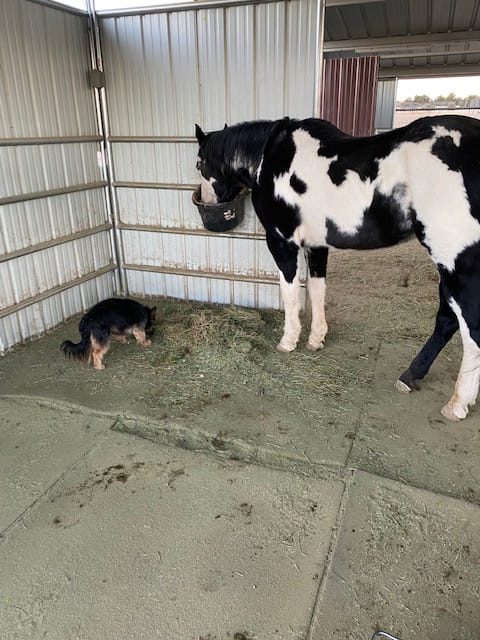
How equine therapy is helping children and adults find peace of mind. Horses make a great companion for psychotherapy because they can mirror and respond to human behavior, And crucially, “there no judgment with a horse”
It’s Friday in Buckeye, Arizona laughter can be heard from the streets below. Sarah Smith is sprawled on her bed, diligently peeling through sociology notes, preparing for her impending exams. An acoustic guitar rests against her bed, and the United States flag is pinned next to her bookshelf.
At first glance, Julie comes across as a typical high school student – but her serious brown eyes sometimes betray a history of violence, abandonment and emotional trauma.
Julie was born into adoption at a private home in Maricopa County and was abused by her pre-school teacher at the age of three. Eighteen years of psychological and abuse followed Julie into adulthood, where the lingering devastation of her childhood spiraled into uncontrollable alcohol addiction and mental illness.
Julie eventually surrendered to the streets, becoming homeless aged 21. She was living out of friends’ cars and public bathrooms until she met some amazing people that gave her food, healthcare, education and a place to live. She is now five years sober, and is close to graduating from her business degree at San Francisco-State with a 3.8. Two years ago she was diagnosed with cancer, and after a determined battle against the disease, she is now in full remission.
To work through ongoing problems attached to her self-esteem, confidence and trust in other people, Julie enrolled in an equine-assisted therapy program.
Horses make great companions for psychotherapy because they can mirror and respond to human behavior. Being herding animals, they rely on an acute stream of sensory data to sense safety or danger; they can also hear the human heartbeat within four feet, and research on heart-rate variability indicates that horses have a profound ability to synchronize their own heartbeat with that of human beings. When people are introduced to the herd environment for therapy, horses respond within the same spectrum of physical and emotional responses that govern their own behavior, allowing therapists an insight into the inner psychology of the client.
The program director is a horse lover and licensed marriage and family therapist with over 25 years of experience. Julie, for her part, had very little experience with horses and had never undergone any form of emotional treatment outside of medication and traditional office-based talk-therapy.
Julie gaze searched the eyes of each horse. She established an immediate connection with Blue, a 13-year-old Arab that the first glance guided Julie into a sensory exercise that stretched her comfort zone by feeling her way around Blue’s body with her eyes closed.
It is common for people to feel intimidated by the sheer size and power of horses –weighing up to 1,800lb, horses can become metaphors for dealing with intimidating life circumstances. As Julie developed more confidence, she assumed more control within the herd by leading Blue from behind without the use of ropes or a whip – an instinctual method used by horses to push and lead each other.
“I was a little skeptical at first and I found the horses to be very intimidating. I didn’t know what was going to happen. I had no expectations … I made eye contact with Blue and I felt immediately connected to her. The sensory exercise was really cool, it was scary, but it bridged the gap between me and the horse,” Julie explained.
Therapy is administered out of the saddle, and the horses are at liberty to respond as they wish. The Director believes that “you get more of an authentic response by giving the horse more freedom. It’s magnificent to be on the back of a horse, but it’s also magnificent to companion-walk with them when they choose to be with you.”
The Director at the ranch works within a physiological therapy model, always watching eye dilation, heart rate, body language and gestures. Her role was to safely guide Julie through a series of ground-based activities that kept both her and the horse within a therapeutic window of arousal – “If they get too high the client will dissociate and the horse will panic, if they get too low there can be a feeling of depression or disengagement,” she explained.
At the beginning of the second therapy session, Julie found the horses far less intimidating. The staff directed Julie to select a prop and make it symbolic of an aspect of her life. Julie unraveled a small colorful parachute that signified her confidence in school. Julie then cast the parachute to the wind and laid it down in the middle of the arena, but Blue wouldn’t budge. With a flick of the head and a stomp of her hoof, the Blue unexpectedly bolted to the other end of the arena in a nostril-flared panic, leaving Julie marooned on her fabric island in the middle of the wide arena.
“Blue got scared, I don’t know what happened, but it reminded me of being a child. I went over to comfort her and said I will never hurt you.”
Julie mustered the courage to reproach Blue, and softly stroked the pony’s mane. She was struck by an intense surge of emotion, and tears began to stream down the side of her face. Blue gently nuzzled into her, allowing Julie to be fully present with the horse and revisit her trauma without been enveloped by its vortex.
“I saw Blue like me as a child, I was crying hysterically, a real deep cry, I felt a sense of protection and sadness. The horse allowed me to feel those feelings; the horse comforted me when I was emotionally vulnerable.”
On her third and last session, Julie led Blue out of the stables and into the arena, where she divided the therapeutic space into three sections that represented her past, present and future. The moment was peaceful, and Julie drew in a deep breath, relaxed her shoulders, and took a confident stride forward, compelling Blue into a companion walk, side by side, shoulder to shoulder.
“I was in disbelief – I didn’t think I could have an emotional connection with a horse. I felt like I made a friend, there was a bond. It allowed for me to really get in touch with how I feel. If you’ve been hurt, sometimes it’s harder to be around other human beings – but there’s no judgment with a horse.”
She explained that “walking through her childhood” with the horses forced her to put her pain in the past, and helped her identify the person she hopes to become. Julie also noted a considerable improvement in her communication skills and confidence as a direct result of this program. Reflecting on the experience, Julie is in awe of the horses, unable to articulate how healing the program was. “Words are so limiting sometimes,” she said with a smile.
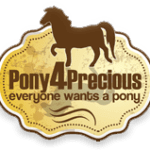
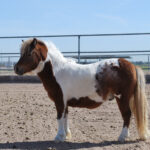
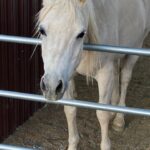
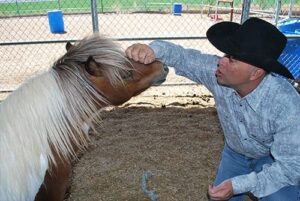
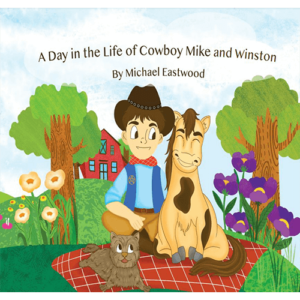
No comment yet, add your voice below!